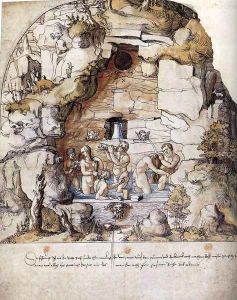Peter Flotner Paintings
Peter Flotner was a German Renaissance medallist, draftsman, and sculptor, born around 1485 in Thurgau, Switzerland. Despite the scarcity of detailed documentation of his early life, it is known that he became one of the influential artists of his time, primarily active in Nuremberg, Germany. His works are characterized by their intricate detail, typical of the Northern Renaissance, and his versatility in various artistic mediums.
Flotner’s career flourished in Nuremberg, a city that was, during the 16th century, a hub for artists, craftsmen, and humanists. He was particularly well-known for his small-scale works, such as medals, plaquettes, and household items that were often decorated with mythological or allegorical scenes. His style blended gothic and Renaissance elements, showing both the lingering medieval tradition and the influence of Italian Renaissance, a combination that was typical in Northern European art of the time.
Among his notable works are the designs for the famous mechanical clock at the Church of Our Lady in Nuremberg, as well as a series of woodcuts, which were used as illustrations in books and were instrumental in disseminating his designs across Europe. Flotner's influence was significant in the realm of decorative arts, as his patterns were widely copied and adapted by craftsmen in various materials such as bronze, pewter, and wood.
Peter Flotner's work was part of a larger cultural movement that saw the blending of artistic and intellectual pursuits, contributing to the rich tapestry of Renaissance art. His pieces often carried humanist themes and were sought after by patrons who were interested in classical antiquity and the revival of its aesthetics. Unfortunately, many of his original sculptures have not survived, but his impact is still recognized through his surviving plaquettes, medals, and printed works.
Flotner passed away in 1546 in Nuremberg. Despite the fact that he was not as widely known as some of his contemporaries, his work represents an important link between the artistic traditions of the Middle Ages and the Renaissance, and it provides valuable insight into the world of German Renaissance art and the cultural landscape of Central Europe during this period.
